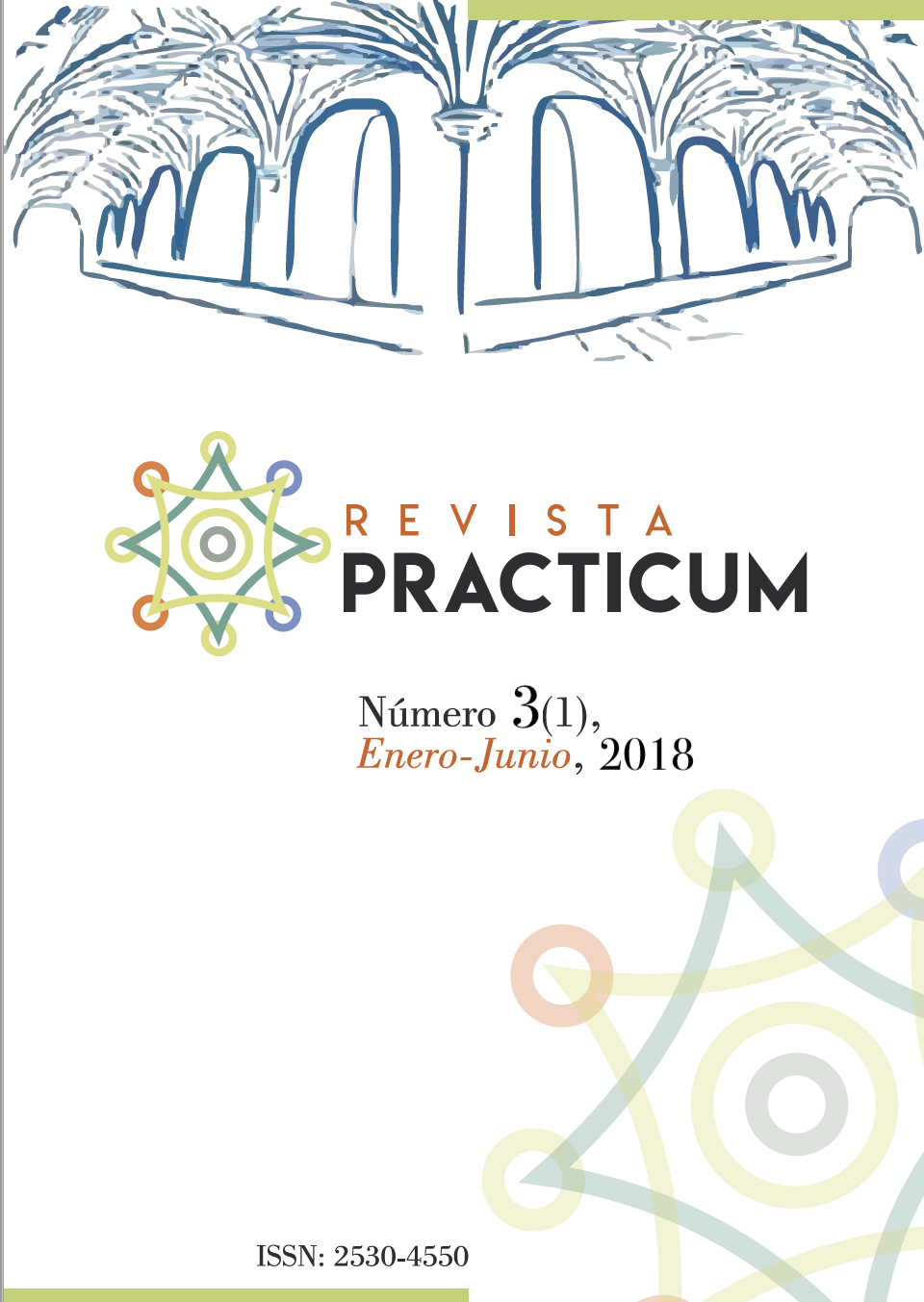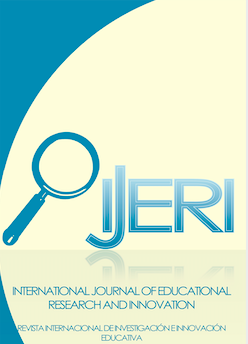Ways of participation during the practicum in the classroom community as opportunities to learn the teaching profession
DOI:
https://doi.org/10.24310/RevPracticumrep.v3i1.8272Keywords:
Participation, practicum, interaction, student teaching, observational learningAbstract
This article presents some of the results of an investigation focused on knowing the forms of joint participation of a student teacher and a tutor in a classroom community during the practicum. The research is part of a sociocultural perspective of learning understood as participation. The methodology corresponds to a singular case study consisting of a teacher of Early Childhood Education, eighteen students and a student teacher. Fifteen classroom sessions distributed throughout a semester are analysed. The results allows the identification of nine different forms of joint participation, pre-sent during the practicum, which for the student teacher represent varying degrees of involvement and co-responsibility in said classroom community. The distribution of the different forms of participation throughout the practicum does not follow, as would be expected, a growing trend, from less to more participation of the student teacher, but it shows important oscillations that involve advances and setbacks in the degree of in - volvement in the tasks of the classroom, even in those in which she had already achie-ved high levels of involvement. These oscillations are explained according to specific aspects of the sociocultural practice of the classroom in which they occur.Downloads
Metrics
Publication Facts
Reviewer profiles N/A
Author statements
Indexed in
-
—
- Academic society
- N/A
- Publisher
- Universidad de Málaga
References
Billett, S. (2014). Mimetic learning at work. Learning in the circumstances of practice. Dordrecht, Países Bajos: Springer. doi: 10.1007/978-3-319-09277-5
Coll, C., Bustos, A., y Engel, A. (2008). Las comunidades virtuales de aprendiza je. En C. Coll, y C. Monereo (Eds.), Psicología de la educación virtual (pp. 299- 320). Madrid, España: Morata.
Coll, C., Onrubia, J., & Mauri, T. (2008). Ayudar a aprender en contextos educativos:el ejercicio de la influencia educativa y el análisis de la enseñanza. Revista de Educación, Mayo-Agosto, 33-70. Recuperado de http://www.revistaeducacion.mec.es/re346/re346_02.pdf
Colomina, R., Onrubia, J. y Rochera, M. (2001). Interactividad, mecanismos de influencia educativa y construcción del conocimiento en el aula. En C. Coll, J. Palacios, y M. Marchesi (Eds.), Desarrollo psicológico y educación. Volumen II. Psicología de la educación escolar (pp. 437-458). Madrid, España: Alianza.
Edwards, A. (2005). Let’s get beyond community and practice: The many meanings of learning by participating. Curriculum Journal, 16, 49-65. doi: https://doi.org/10.1080/0958517042000336809
Engeström, Y. (2001). Expansive learning at work: Toward an activity theoretical reconceptualization. Journal of education and work, 14, 133-156. Recuperado de http://www.tandfonline.com/doi/pdf/10.1080/13639080020028747
Filliettaz, L., Trébert, D., & Rémery, V. (2012). Relation tutorale et configuration de participation a? l’interaction: le cas de la formation professionnelle des éducatriceset éducateurs de l’enfance [Relación tutorial y configuración de la participaciónen la interacción: el caso de la formación profesional de educadores y educadoras de infantes]. Ponencia presentada en el 2° Coloquio internacional de didáctica profesional, aprendizaje y desarrollo profesional, Universidad de Nantes, Nantes,Francia. Recuperado de https://archive-ouverte.unige.ch/unige:27171
Hodkinson, P., y Hodkinson, H. (2004). A constructive critique of communities of practice: moving beyond Lave and Wenger. Paper presentado en Integrating workand learning – contemporary issues’ seminar series 2004. Sidney, Australia. Recuperado de http://www.voced.edu.au/content/ngv%3A37993
Lave, J., y Wenger, E. (1991). Situated learning: Legitimate peripheral participation.Cambridge, Reino Unido: Cambridge University Press.
Lave, J., y Wenger, E. (2002). Legitimate peripheral participation in communities of practice. En M. Lea, y K. Nicoll (Eds.), Distributed Learning. Social and cultural approaches to practice (pp. 56-63). London, Inglaterra: Routledge.
Matusov, E. (1998). When solo activity is not privileged: Participation and internalization models of development. Human Development, 41, 326-349. doi: http://dx.doi.org/10.1159/000022595
Mauri,T., Clarà, M., Ginesta, A. y Colomina, R. (2013). La contribución al aprendizaje en el lugar de trabajo de los equipos docentes universitarios. Un estudio exploratorio. Infan-cia y Aprendizaje, 36(3), 341-360. doi: https://doi.org/10.1174/021037013807533025
Rogoff, B. (1995). Observing sociocultural activity on three planes: Participatory appro-priation, guided participation and apprenticeship. En J. Wertsch, P. del Río, y A. Álvarez (Eds.), Sociocultural studies of mind (pp. 139-164). Cambridge, Reino Unido: Cambrid-ge University Press.
Rogoff, B., Paradise, R., Arauz, R. M., Correa-Chavez, M., & Angelillo, C. (2003). Firsthand learning through intent participation. Annual Review of Psychology, 54, 175–203. doi: https://doi.org/10.1146/annurev.psych.54.101601.145118
Schatzki, T.R. (2002). The site of the social: A philosophical account of the constitu-tion of social life and change. Philadelphia, Estados Unidos: University of Pennsylvania Press.
Schatzki, T.R. (2010). Materiality and social life. Nature and Culture, 5, 123-149. doi: http://dx.doi.org/10.3167/nc.2010.050202
Toledo, B., y Mauri, T. (2014). Construcción social de las prácticas de una comunidad de aula de educación infantil: Análisis de la actividad conjunta de la maestra tutora, maes-tra practicante y alumnos/as. En M. A. Flores, C. Coutinho, y J. A. Lencastre (Comps.), Atas do congresso Formac?a?o e trabalho docente na sociedade da aprendizagem. Orga-nizado no a?mbito da International Study Association on Teachers and Teaching (ISATT) e do Centro de Investigac?a?o em Estudos da Crianc?a (CIEC) (pp. 489-500). Braga, Por-tugal: CIEC, UMinho.
Toledo, B., y Mauri, T. (2015). Dinámicas de participación en una comunidad de aula: Oportunidades de aprendizaje del futuro maestro durante el período de prácticum. Pa-peles de Trabajo sobre Cultura, Educación y Desarrollo Humano, 11, 121-127. Recupe-rado de http://www.uam.es/otros/ptcedh/2015v11_pdf/v11n2sp.pdf
Toledo, B. y Mauri, T. (2016). Aprendizaje como participación durante el prácticum en un aula de Educación Infantil. Estudios Pedagógicos, 42, 343-363. doi: http://dx.doi.org/10.4067/S0718-07052016000200020Wenger, E. (1998/2001). Comunidades de práctica. Aprendizaje, significado e identidad (G. Sánchez, Trad.; Título original: Communities of practice: Learning, meaning and identity). Barcelona: Paidós.
Yin, R. (2006). Case study methods. En J. Green, G. Camilli, y P. Elmore (Eds.), Hand-book of complementary methods in education research (pp. 111-122). Mahwah, Esta-dos Unidos: Lawrence Erlbaum y AERA.
Young, R. (2008). Chapter two: Foundations for the study of practice. Lenguage Lear-ning, 58(2), 9-47. doi: http://dx.doi.org/10.1111/j.1467-9922.2009.00489.x
Downloads
Published
How to Cite
Issue
Section
License
Acceptance of the work implies that the author grants Revista Prácticum the exclusive rights to reproduce, distribute and sell his or her work worldwide, both in digital and paper formats, CD-ROM, etc.
Likewise, the authors shall grant Revista Prácticum the rights of dissemination, public communication on the Internet and IT networks, data buses, as well as any other portals or electronic devices for online consultation of its contents and extracts, under the conditions of the portal, repositories or databases where the work is stored.
Revista Prácticum allows authors to publish and disseminate their articles and works on their personal websites, research teams, institutional repositories and scientific databases. All this in accordance with the Creative Commons 4.0 License










8.png)








